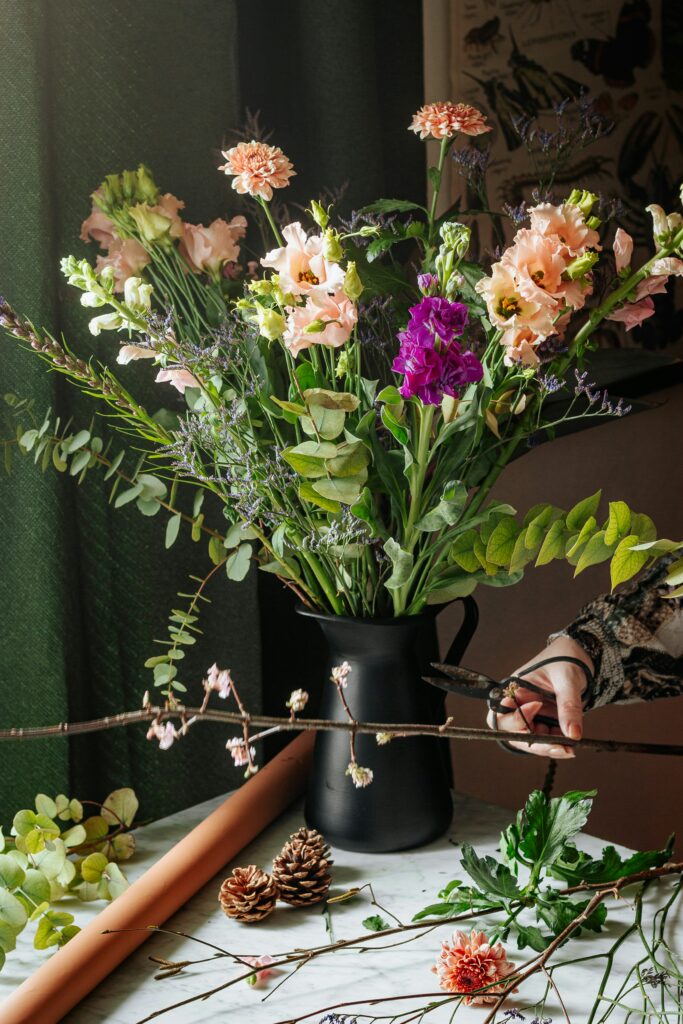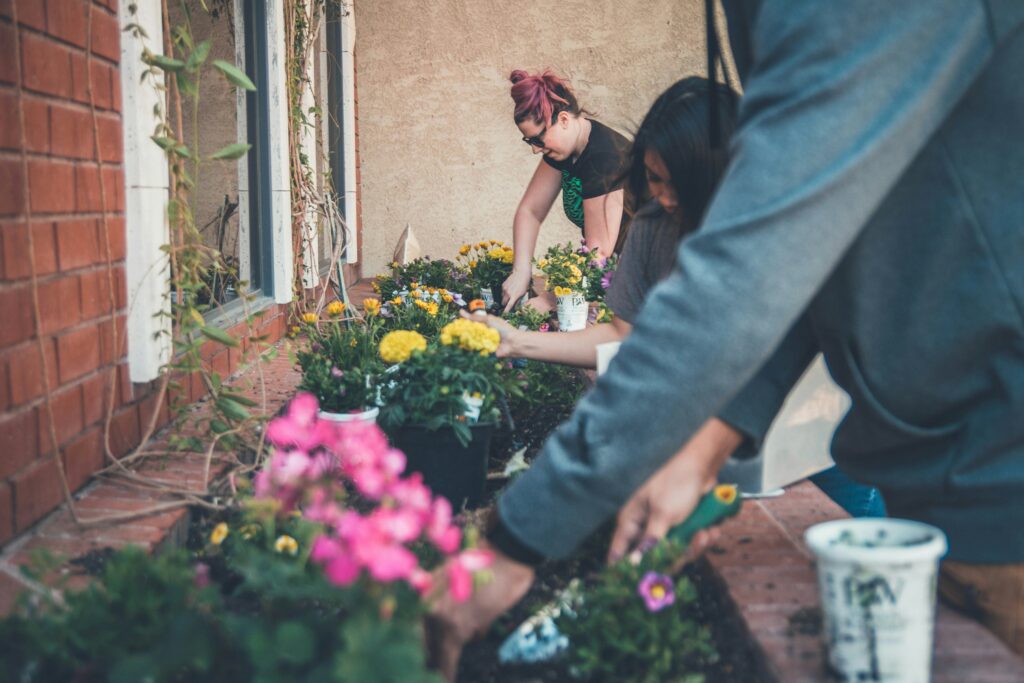Bloom Your Way to Wellness: TH and Flower Arranging
go.ncsu.edu/readext?1046812
en Español / em Português
El inglés es el idioma de control de esta página. En la medida en que haya algún conflicto entre la traducción al inglés y la traducción, el inglés prevalece.
Al hacer clic en el enlace de traducción se activa un servicio de traducción gratuito para convertir la página al español. Al igual que con cualquier traducción por Internet, la conversión no es sensible al contexto y puede que no traduzca el texto en su significado original. NC State Extension no garantiza la exactitud del texto traducido. Por favor, tenga en cuenta que algunas aplicaciones y/o servicios pueden no funcionar como se espera cuando se traducen.
Português
Inglês é o idioma de controle desta página. Na medida que haja algum conflito entre o texto original em Inglês e a tradução, o Inglês prevalece.
Ao clicar no link de tradução, um serviço gratuito de tradução será ativado para converter a página para o Português. Como em qualquer tradução pela internet, a conversão não é sensivel ao contexto e pode não ocorrer a tradução para o significado orginal. O serviço de Extensão da Carolina do Norte (NC State Extension) não garante a exatidão do texto traduzido. Por favor, observe que algumas funções ou serviços podem não funcionar como esperado após a tradução.
English
English is the controlling language of this page. To the extent there is any conflict between the English text and the translation, English controls.
Clicking on the translation link activates a free translation service to convert the page to Spanish. As with any Internet translation, the conversion is not context-sensitive and may not translate the text to its original meaning. NC State Extension does not guarantee the accuracy of the translated text. Please note that some applications and/or services may not function as expected when translated.
Collapse ▲February 14 is Valentine’s Day and February 28 is Floral Design Day. Along with the weather in North Carolina not always being welcoming this short month, it’s a perfect opportunity to focus on some indoor therapeutic horticulture ideas that still keep our participants engaged with plants– so let’s focus on flowers!
Therapeutic horticulture uses gardening and plant-related activities to promote mental, physical, and emotional well-being. Research has shown it to be effective in reducing stress, anxiety, and depression, as well as improving cognitive function and motor skills.
Flower arranging is therapeutic horticulture activity that can be used to help people with a variety of conditions, including:
- Mental health disorders such as depression, anxiety, and bipolar disorder
- Physical disabilities such as stroke, spinal cord injury, and arthritis
- Cognitive impairments such as dementia and Alzheimer’s disease
Research has shown that flower arranging can have a number of positive effects on mental health, including:
- Reduced stress and anxiety: A study published in the Journal of Death and Dying found that people who participated in a flower arranging program experienced a significant reduction in stress and anxiety levels.
- Improved mood: A study published in the journal Evolutionary Psychology found that people who participated in a flower-arranging program experienced a significant improvement in their mood.
- Increased self-esteem: A study published in the Journal of People, Plants and the Environment found that children who participated in a flower-arranging program experienced a significant increase in their self-esteem.
Flower arranging can also be a helpful activity for people with physical disabilities. The process of arranging flowers can help to improve fine motor skills, coordination, and dexterity. It can also be a way to increase social interaction and engagement.
If you are interested in learning more about therapeutic horticulture and flower arranging, there are a number of resources available. You can find information online, in books, and from local organizations.
Here are some additional resources that you may find helpful:
- American Horticultural Therapy Association
- The Flower Arranging Academy
- Therapeutic Horticulture Activities Database: Flower arranging session plan
In conclusion, flower arranging is a valuable therapeutic activity that can be beneficial for people of all ages and abilities. It is a creative and rewarding way to improve your mental, physical, and emotional health. Why not try this rewarding activity with a group this month?
Research references:
Lavin, J., Lavin, C., Bai, X., Mastropaolo, S., & Feldman, D. (2021). Determining the Effect of Group Flower Arranging Sessions on Caregiver Self-Efficacy and Stress Levels in an In-Patient Hospice. OMEGA – Journal of Death and Dying, 84(2), 491-511. Sage Journals
Haviland-Jones, J., Rosario, H. H., Wilson, P., & McGuire, T. R. (2005). An Environmental Approach to Positive Emotion: Flowers. Evolutionary Psychology, 3(1). Sage Journals
Park, Y. H., Yun, S. Y., Choi, B. J., & Choi, H. S. (2019). Floral Design Courses to Build Self-Esteem in Children Enrolled in the Community Child Care Center for Low-Income Families: Focused on the Accreditation Process of the Junior Florist Certification. Journal of People, Plants, and Environment, 22(4), 375-384.




